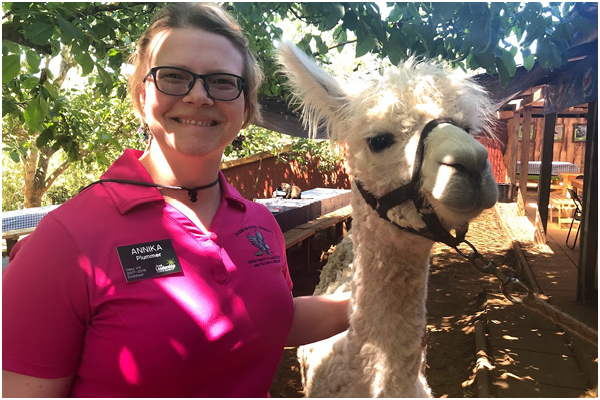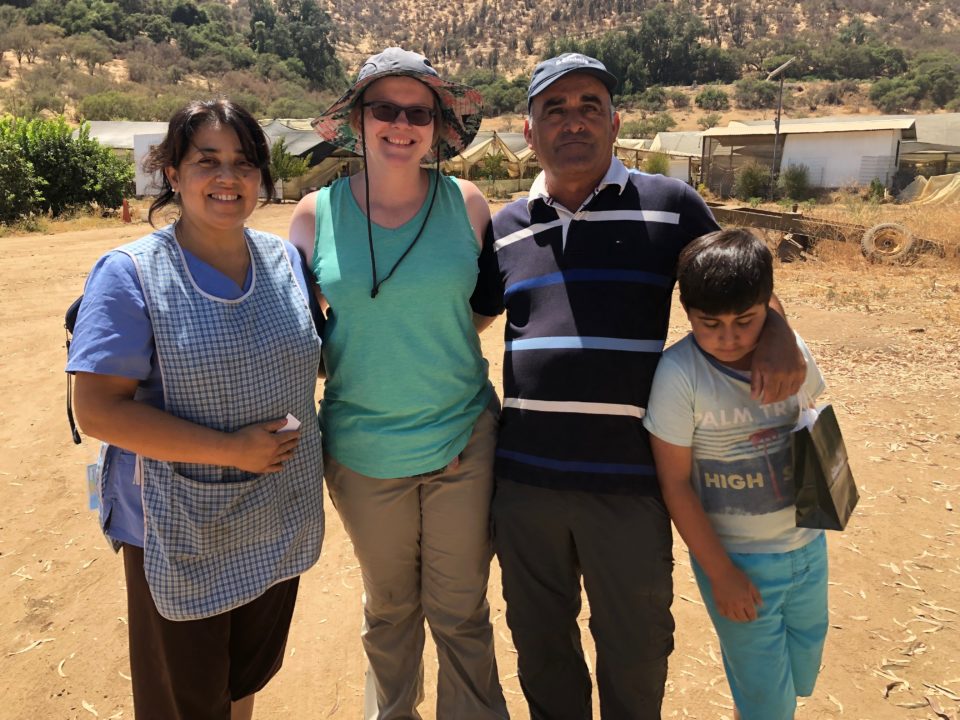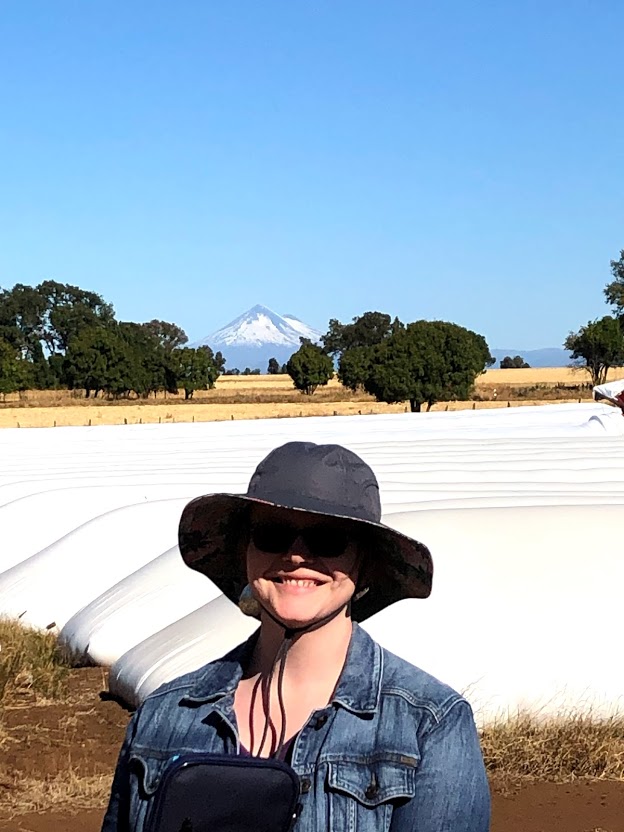
Plummer pictured with a llama at an alpaca and llama farm outside Temuco, Chile.
Written by Annika Plummer, administrative secretary for the Department of Agriculture and Technical Studies
As the students in the Dickinson State University (DSU) Department of Agriculture and Technical Studies will tell you, they enjoy learning outside of a classroom setting. Hands-on activities and field trips to different locales are what make learning interesting in agriculture. Experiencing the diversity in the places around us make learning fun!
Fortunately, Dickinson State University invested in me by sponsoring my tuition for Rural Leadership North Dakota (RLND). RLND is an 18-month dynamic leadership development program designed for men and women who are dedicated to strengthening the agriculture industry, their community, and the state of North Dakota for the future. RLND’s mission is to “prepare and develop effective leaders to strengthen North Dakota.” While the position of “administrative secretary” might not be the typical definition of leader, I am proud to help lead the students in our department and encourage them to try new things.
As a RLND Class VIII member, I’ve traveled all across our great state of North Dakota to learn about agriculture and communities; learned about regional agriculture through a trip to Minneapolis, MN; visited Washington, DC, to discover the best ways to connect with North Dakota’s leaders on the national scale; and recently returned from an international trip to Chile.

While more than 6,000 miles separate southwest North Dakota from the country of Chile, there are many similarities. During my 11-day experience in Chile, I ascertained that agriculture is an industry that connects people worldwide. Our group visited vegetable farmers, grain farmers, a flower farmer, a sheep rancher, a hazelnut orchard, a pear orchard, a llama and alpaca breeder, indigenous (Mapuche) entrepreneurs working small farms, and a vineyard, among other places. We had the opportunity to visit the U.S. Embassy and learn from the Foreign Agricultural Service about U.S. exports to Chile. I saw first-hand a U.S.D.A. fruit inspection station where peaches, cherries, plums, and more were inspected before being exported to the U.S. The farmers we met were honored to share their knowledge with American visitors, and their pride in their farms was evident – much like you’d see with a farmer or rancher in southwest North Dakota. Like North Dakota, Chilean neighbors help each other in times of hardship. One of the farmers we visited had experienced a devastating fire to his cropland, and his neighbors showed up to combat the blaze.

My goal as a member of RLND is to show our students that experiencing new places, meeting new people, and learning about other operations is a valuable use of time. In order to strengthen ourselves as leaders, we must continue learning. It is my hope that our graduates in agriculture will seek out opportunities to expand their awareness of the state, the region, the country, and the global marketplace. The RLND experience has offered me many opportunities to make connections for our students and grow our network for the department. If you’re interested in participating in this great program, visit www.ag.ndsu.edu/rlnd/About-RLND and apply to be in Class IX.


